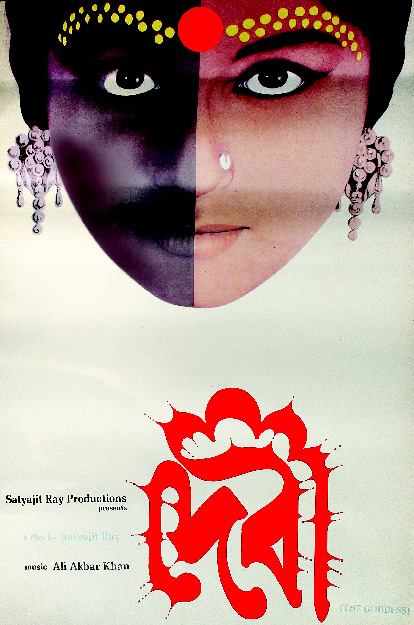
High-pitched, kaleidoscopic, and of a vividly-Operatic tenor, the fine art of the Indian Film Poster comprises a unique painterly genre, which is a remarkable amalgam of the Classical with quintessentially-Desi Kitsch. Having been recognised as an intrinsically-Indian Popular-Art form with vast mass appeal, over the past decade, this painterly idiom has been extensively chronicled by India’s leading academic institutions, art-auctioneers and museums. The subject is taught at Jawaharlal Nehru University, and at the Sarai Institute. Aesthetic as well as sociological interest in this eye-catching art-oeuvre is fast developing as a credible embodiment of the Indian ethos.
Two recent Gurgaon-based cultural events drew one’s attention to the original art form of the Desi Poster. An exhibition of Indian Film Poster-Art is currently on display at the Galaxy Hotel --- and a fascinating play entitled ‘Ten Years With Guru Dutt: Abrar Alvi’s Journey’ was presented on 22 Dec. at the Epicentre. It is directed by Saatvik, with the collaboration of noted film journalist Sathya Saran, who recently released her book by the same name. The art-direction of this interesting 90-minute bilingual Hindi-English play incorporated the use of actual classic film posters --- from Pyaasa and Sahib Bibi aur Ghulam --- as the backdrop to a gripping human drama of warring actors, actresses, script-writers and musicians. The Film Poster Exhibition offers some timeless posters, designed and calligraphed by Satyajit Ray – including his early 1950s Masterpieces Apur Sansar, Debi, and Teen Kanya.
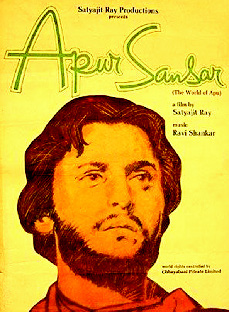
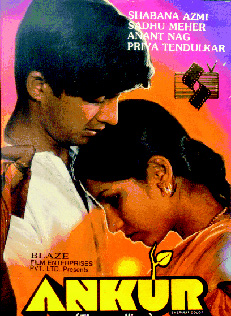
Due to the film hoardings’ direct connection with commercial and publicity-oriented networks, the laborious handpainted art involved in its design and creation was overlooked for several decades. In the words of Prof. Shashikant Pandey, Film Studies Professor of the Asian Academy of Film and TV, “The prolific, humble and hardworking painters of Indian film posters have, sadly, remained faceless.” However, with the advent of digital printing, that has fast rendered such film-paintings extinct, the hand-painted film poster has gained credibility and respectability as an art form. It is now viewed as a serious cultural imprint --- an art form worthy of heightened international gallery-display, art-collection, and academic study.
In the words of Prof. Ranjani Mazumdar of JNU, “Collectors of artefacts and art-objects, posters and photographs, paintings and old books, recognise the power of nostalgia within modernity. The art-collector engages in the process of diversion precisely to enhance the aesthetic power of a Collection. The hand painted film poster today is a collector’s art-item --- a commodity enclosed and rarified, a product of nostalgia, ‘entrepreneurial genius’, popular memory and modernity.”
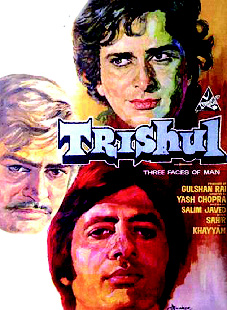
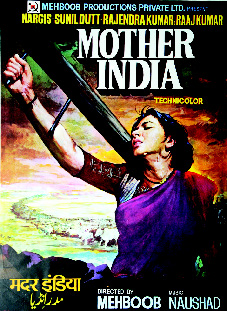
From the art-critical standpoint, I have observed three distinct genres of the Indian Film Poster. The first is the hand-designed art-posters created by our aesthetic thespian Satyajit Ray, who was also a prolific literary illustrator, with an advertising and design background. His extremely elegant cinematic poster-designs stand at the highest rung of this oeuvre. Ray usually employed a Minimalist Bengali ink-palette of stark kaajal-black, milky-white and sindoor-red in his poster-designs, with the occasional sepia tone. The maverick director-artist carefully drew graphic linear recreations of his film’s protagonists, and juxtaposed these portraits with his own amazingly-stylised calligraphy. This art is best exemplified in Ray’s exquisite poster for Debi --- here, the Durga-like face of a young Sharmila Tagore looms hauntingly over Ray’s Bengali calligraphy in red, where the word ‘Debi’ is written to evoke an actual Bengali Puja-mandap. Similar portrait- and calligraphy-oriented stylistics may be observed in Ray’s posters for Teen Kanya and Apur Sansar.
The second aesthetic rung of the Indian Film Poster is exemplified by the subdued, relatively-subtle artworks for Alternative Indian Cinema --- which encompasses a fairly wide social gamut, from films such as Guru Dutt’s Kaagaz Ke Phool, Pyaasa, and Sahib Bibi aur Ghulam, to pathbreaking artistic films by Shyam Benegal, Saeed Mirza, Govind Nihalani and Gautam Ghosh – such as Ankur, Albert Pinto ka Gussa Kyun Aata Hai, Ardh Satya and Paar. These radical directors employed more sophisticated urban designers, to create elegant and muted poetic prototypes for their hoardings, usually applying a manner of Art-Photography --- as opposed to the high-keyed multicolour palettes employed in mainstream ‘blockbuster’ Indian film posters. This latter comprises the third rung of this art form.
It is a well-known fact of Indian urban legend that the late modern artist M.F Husain began his painterly career creating handpainted hoardings for Bollywood’s brash Bombay blockbusters. Husain painted India’s screen-gods and goddesses, painstakingly perched for hours upon bamboo poles on the dusty sidewalks of Bombay’s streets.
Some prolific film-poster artists include: D.Bhosle, Diwakar Karkare, Tilak Raj, Ram Kumar, C. Mohan, J.P Singhal, Bhede ji, Prithvi Soni, and Param Art Studio. Tilak painted such classics as Aankhen and Junoon. Karkare painted the posters for Sholay, Deewar, Naseeb and Dus Numbri. Bhonsle painted the Guide poster. Most of these artists, from humble backgrounds, had some basic Art-College training in classical Figurative Art and Oil Painting, which stood them in good stead while bringing to life all the melodramatic, saccharine, romantic, tragic and comic nuances of the Indian khichdi blockbuster.
India’s original film posters were all meticulously hand-painted and printed as Lithographs --- a beautiful process that is very rare today. Aside from auction-houses such as Ossian’s, other art-portals such as the Delhi-based Cafe Dreams have, fortunately, preserved huge collections of such original posters. Of special interest for the aesthete are early Mythological film-posters, such as Sri Krishna Vivaha, Maya Bazar and Nav-Durga, and also quaint classics such as Nadia’s Hunterwali Ki Beti, Sher-E-Baghdad, and the inimitable showstopper melodrama Sholay.
The style of the quintessential mainstream Indian film-poster combines bold strokes, depicting the human figure in its most heightened emotional moments, painted with a shocking masala-palette involving every possible hue. Such artworks inevitably attract viewers due to their sheer chutzpah, human drama, and uninhibited emotional content. This is an art form that boldly documents unique details of popular culture. With the increased credibility of the ‘Urban-kitsch mode’ in all manners of creative expression, the Indian Film Poster has, at last, found its rightful spot. It is appropriate for such Art to be carefully preserved under gallery arc-lights.
Artist, Writer, & Curator
Read More...